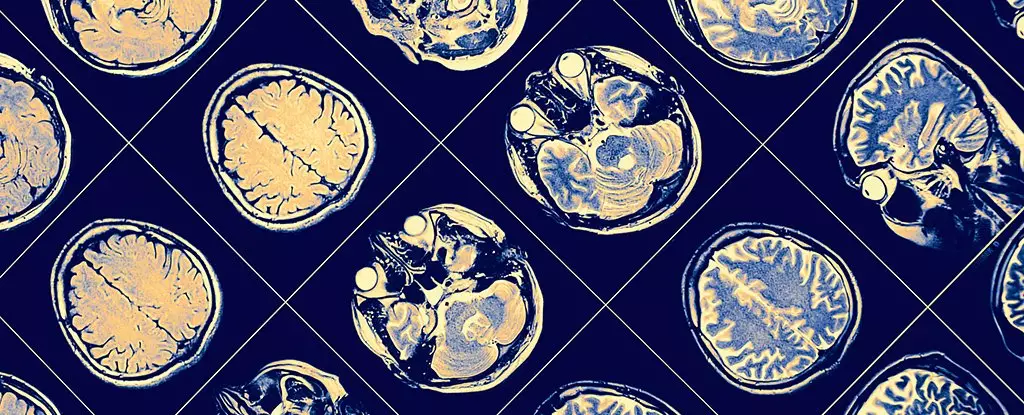The struggle against Alzheimer’s disease has long perplexed both scientists and families alike, especially in cases driven by genetic mutations. Recent research has brought forth an astonishing case—a man at a high genetic risk for developing Alzheimer’s who has managed to defy the odds for decades. This unique situation not only challenges established scientific concepts surrounding Alzheimer’s but also raises questions about the mechanisms that might protect some individuals, despite their genetic predispositions.
With the PSEN2 mutation present in the patient’s genetic makeup, the expectations were dire. Historical data shows that individuals with this mutation typically exhibit onset symptoms of Alzheimer’s by their early fifties. The patient’s family history is alarming; his mother carried the mutation, as did the majority of her siblings, eleven out of thirteen to be exact. For this clan, the spoils of genetic fate were grim, with early-onset Alzheimer’s seemingly a determinism written in their DNA. However, this patient’s ability to avoid the familial destiny has sparked intense scientific discussion, calling into question how he could escape the clutches of an illness that ravaged practically everyone else in his lineage.
Researchers, led by notable scientists from the International University of Catalonia and Washington University in St. Louis, dedicated a decade to monitoring this man’s cognitive health. They conducted various memory and cognitive assessments and notably found all results to be within the normal range, further deferring the patient’s apparent risk for the disease. Despite a brain rich with amyloid-beta plaques—proteins typically linked to Alzheimer’s development—the patient exhibited significantly reduced levels of neuroinflammation. This finding indicates a critical divergence from known patterns of the disease, wherein high amyloid levels are customarily accompanied by significant inflammation.
While amyloid accumulation has long been hailed as a primary culprit in Alzheimer’s pathology, the case of this resilient individual calls for a reevaluation of its impact. The discovery that tau proteins, which also play a destructive role in Alzheimer’s, were predominantly localized to the occipital lobe (the visual processing center of the brain) suggests that the potential for maintaining cognitive abilities might stem from the spatial containment of tau deposits.
The confinement of tau proteins in this patient poses fascinating implications. As noted in the research, individuals typically afflicted by Alzheimer’s see tau spread extensively throughout the brain, wreaking havoc on cognitive capabilities and quality of life. Yet in this man’s case, tau’s restricted area of effect allowed him to maintain intact visual and spatial functioning. This pattern of localized tau pathology highlights a potential pivotal phenomenon that may delay or even stave off the onset of Alzheimer’s symptoms altogether. It leads us to wonder: Is there an underlying defense mechanism that could protect some brains from wide-scale degeneration, despite amyloid presence?
Beyond what was seen in the amyloid and tau distribution, the research team was intrigued by the rare genetic variants found in this patient—nine unique variants identified, six of which had not previously been linked to Alzheimer’s. Intriguingly, while these variants did not show a direct connection to Alzheimer’s, they nonetheless suggest avenues for further exploration regarding their roles in brain inflammation and protein folding. Such proteins are crucial for preventing the aggregation of misfolded proteins that are common in neurodegenerative diseases.
Adding another layer, the man’s occupation as a mechanic, which likely subjected him to elevated heat levels, could have further influenced his resilience against the disease. The chronic exposure to thermal stress may activate protective cellular pathways, promoting a heat shock response that enhances resilience in neurodegenerative conditions.
This case adds a notable chapter to our narrative understanding of Alzheimer’s resilience and defiance against a genetic curse. With a uniquely layered presentation of amyloid deposits and tau protein localization along with genetic and environmental factors, the man’s story sets the stage for further research into protective genetic variants and their interaction with environmental stressors. More importantly, his experience emphasizes the need to broaden our perspectives on Alzheimer’s pathology. What if, through understanding and harnessing these natural defenses, we could pave new paths toward prevention and treatment of this relentless disease? This case study not only inspires hope but is also a clarion call for the scientific community to delve deeper into mechanisms of resilience that might hold the key to unlocking a cure for Alzheimer’s disease.


Leave a Reply